It was around 30 years ago when my environmentalism was first kindled. My mom had absolutely laid the groundwork for mindfulness, if not activism: I remember her helping me write a letter to the captain of the Rainbow Warrior, [1] possibly in crayon; I remember canvassing with her, door to door in our neighborhood, for some kind of clean water effort before I could even read the contents of the flyers we were handing out.
The ‘90s were a time for significant advances in environmental protections (e.g. Clean Air Act amendments), wildlife protections (e.g. United Nations resolution against drift net fishing), and the world’s first carbon tax (thanks, Sweden). [2] That’s not to say the environmental movement wasn’t there before, but it was certainly gaining traction in the policy world and permeating the cultural atmosphere in ways it hadn’t before – and dedicated TV programming helped. This budding young environmentalist regularly called in to Nickelodeon’s “The Big Help” to pledge hours upon hours of picking up litter. [3]
One Man’s Trash…
In the mid ‘90s I got my own TV in my bedroom – a major win for a 10-year-old at the time. Whenever I couldn’t find “Quantum Leap” reruns on the SciFi Channel, I spent a lot of time watching science programming on the Discovery Channel. I no longer remember the name of the show, what it was about, or when it aired, but I do remember that at some point in middle school I watched something with a segment about sustainable architecture and discovered what for many subsequent years I would describe as my dream house: an Earthship.
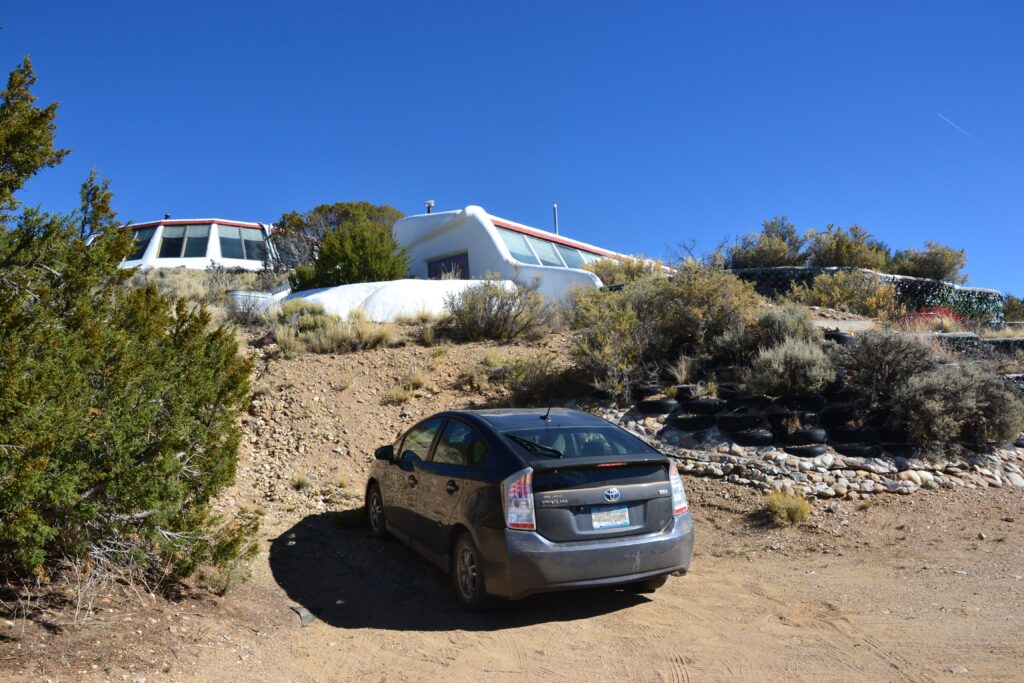
The goal behind this revolutionary structure is to create a self-sustaining home that operates with net zero energy and water use, utilizes material waste as part of the construction process, and does not result in any feeling of deprivation in order to maintain a sustainable lifestyle. In fact, earthships are often built with personal and artistic flair, making them as beautiful as they are comfortable. Once I found out that the epicenter for the Earthship movement was located in northern New Mexico, I knew I needed to see one in person. Upon further research, I discovered that we could stay overnight in one. And now you know where this story is going: Taos, NM.
Earthships returned to my radar when I was in graduate school and we covered them in a Sustainability Tools and Methods class. The man who spearheaded the movement, Mike Reynolds, got a degree in architecture and then broke all the rules of convention, apparently pissing off plenty of people in the process of developing a more sustainable type of home. Originally designed for the desert, earthships make use of old tires packed with dirt as the basis for load-bearing walls. Bottles and cans serve as space fillers in non-load-bearing walls, sometimes exposed for the artistic factor. And one need look no further than Pinterest to get a sense of the range of creativity this architectural medium supports. [4]
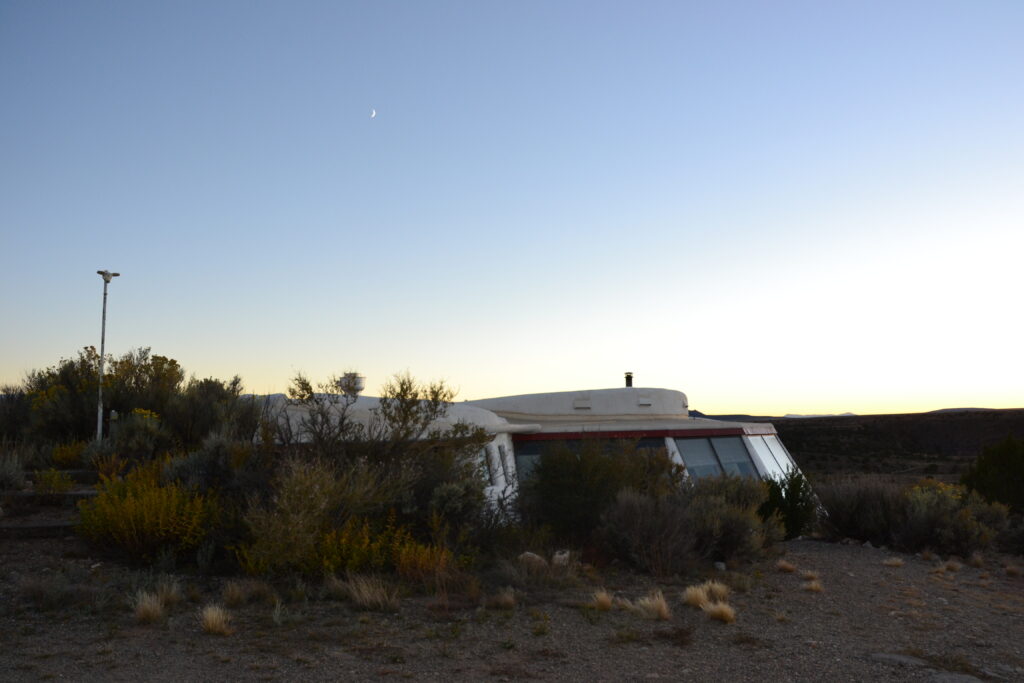
Regulations and building codes, even in characteristically lenient New Mexico, proved to be obstacles in experimental building, but Reynolds was able to push for permissions in some instances and work around them in others. It is still difficult to get loans and building permits for earthships in many places throughout the country, but the movement is growing. The 2007 documentary “Garbage Warrior” details some of the policy resistance Reynolds overcame in the US, [5] but even in a 2021 interview, he said that each site in a 60-home community outside Taos is registered as a waste dump. [6] However, these homes look like anything but garbage, as Christian and I saw for ourselves last October.
A Space-Age Hobbit Hole
We generally do our best to travel economically while on vacation, with one or two nights to pamper ourselves. Once it became apparent that we’d be spending a long Friday night in the Prius outside White Sands Missile Range, [7] I began looking into options for Thursday, and vacation rental site VRBO did not let me down. Knowing more about earthship design than I did about famous earthships, “The Dobson House” [8] meant nothing to me, but once I saw photos of the inside, I would have bet money that that sweeping staircase was the one I saw on the Discovery Channel.
Completed in 1993 after 10 years of construction, the Dobson House is famous as earthships go. It was a collaboration between Mike Reynolds and John Dobson, who was a mechanical engineer and professor at the University of Texas. John and his wife Joan operated their enormous 6,500 square foot earthship as a bed and breakfast for 20 years. Downstairs, where we stayed, there is one guest suite on either side of the entrance. The upstairs includes a large living room, full kitchen, office, and bedroom for the current owner Brenda and her dog Ruby, who gave me the full tour once we arrived.
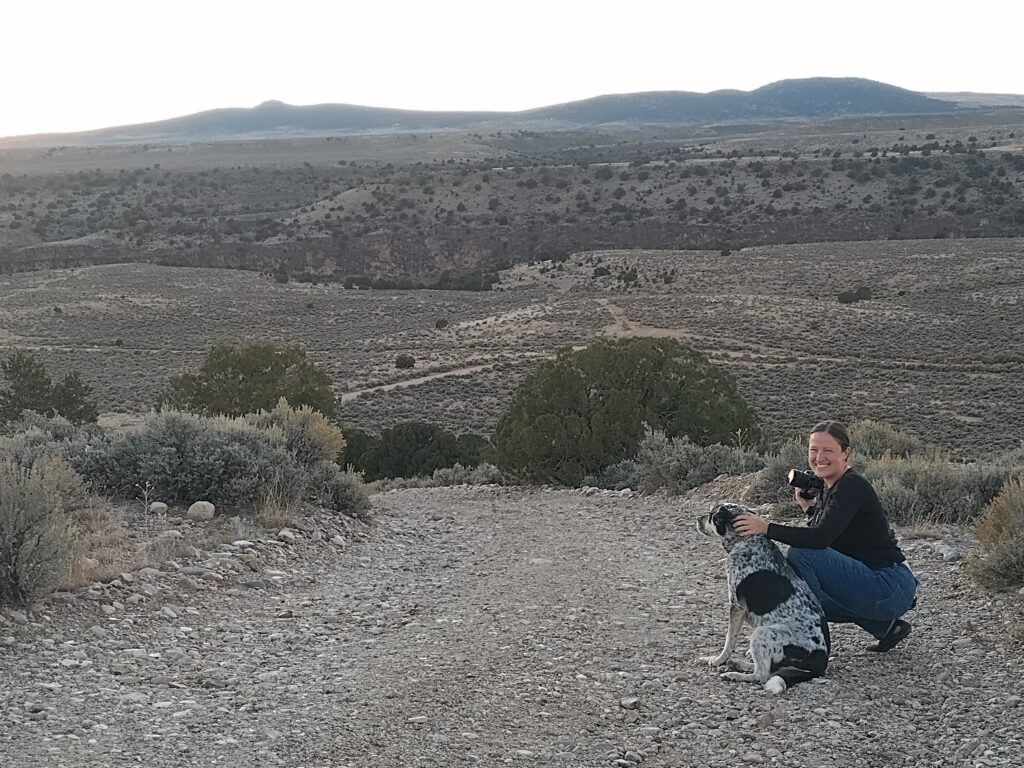
Built into a hill overlooking the Rio Grande Gorge outside Taos, the house boasts a stunning view, dark skies, and no cell service – all major bonuses for me when I evaluate my travel options. But since there was no cell service, we needed to figure out where we were going ahead of time, all while trying to race the sunset on our drive from Los Alamos. We had more faith in Brenda’s written directions than we did in our poor rental Prius, though, especially once we left paved roads behind us. Christian thankfully took the wheel on the heavily pitted, rocky, single lane “roads,” while I got to enjoy the scenery. Knowing nothing at all about earthships before that day, he told me he wasn’t sure what he should be looking for; I told him he’d know it when he saw it.
A Sustainable Life?
Since the Dobson House was designed to be a bed and breakfast, and since earthship design has evolved in the subsequent 30 years since it first opened, it is not necessarily representative of all contemporary earthship standards and practices. However, Brenda told me over coffee the next morning that there are still earthship students who come to study and help maintain the house because it is so iconic and played such an important role in the movement. And when it comes to maintenance, she said upkeep is not much different than a standard house, with occasional repairs needed to the roof and windows.
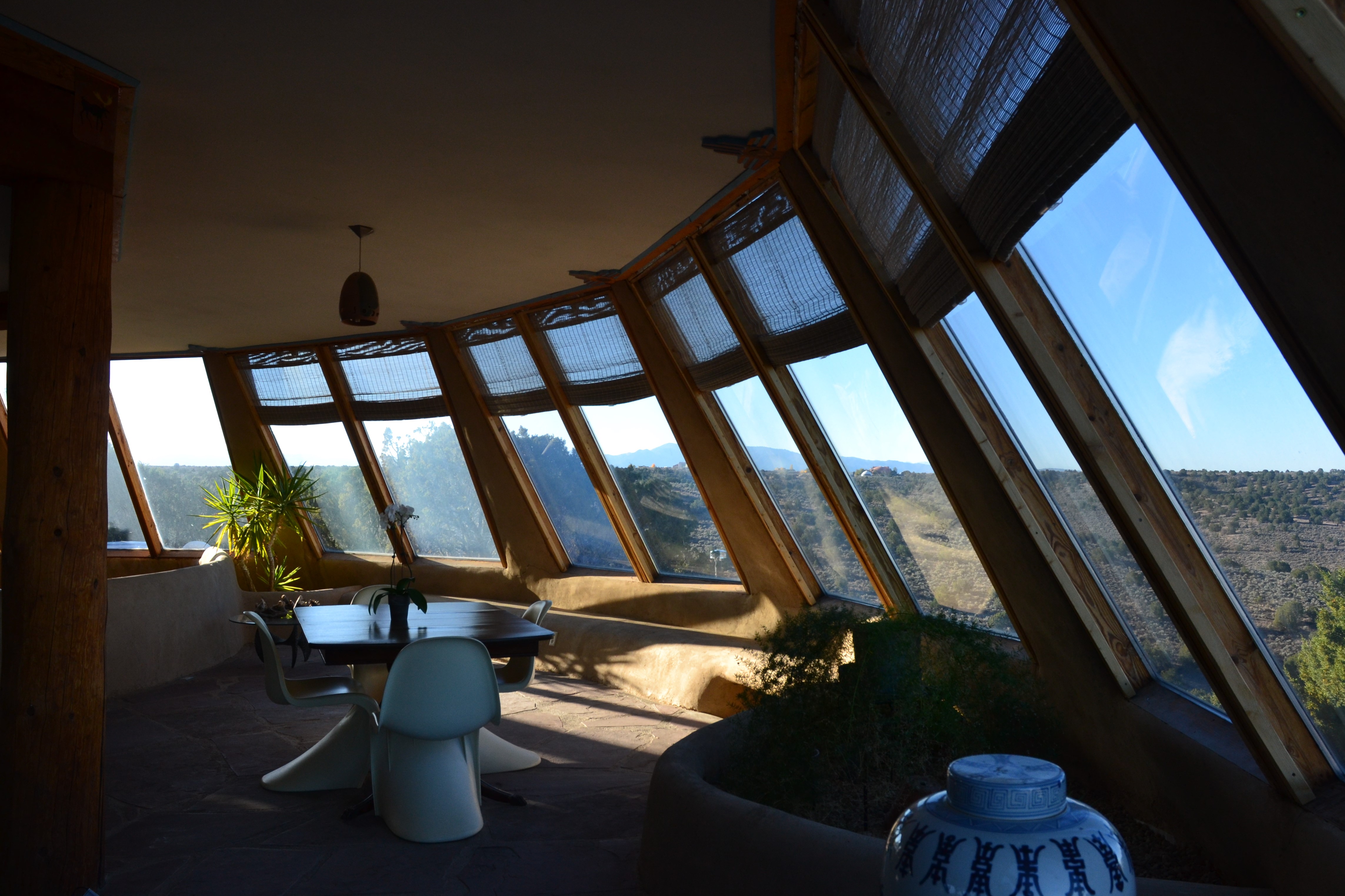
The house is built into the hillside, which helps maintain a constant temperature near 55 degrees. (Earthships can be built on flat ground, as they are in the Earthship Biotecture community across the gorge, [9] but they still must utilize a ramp of earth on three sides to help insulate the home. It’s been about 20 years since I took thermodynamics, but I would venture a guess that if you can use a hill, you should.) Windows are oriented roughly southward (in the northern hemisphere) and angled to get maximum solar benefit in winter, but not in summer. While Brenda makes occasional use of some supplementary wood heat in the winter and swamp coolers in the summer, she told me that she doesn’t have to rely on them much, and that it can be as warm as 80 degrees in the living room on a bright winter day.
While earthships in theory are supposed to be completely net zero for energy and water use, that isn’t always the case, especially with our shifting climate, and especially if you want to ensure comfort when hosting tourists. The Dobson House has access to well water and is connected to the electricity grid, mostly to run the well pumps. Off-grid earthships sometimes need to truck in water and rely on generators when those supplies run short. Although it can be a major point of pride to advertise a home as completely off-grid, I learned that the local electricity supply is powered 100% by solar, which is still cleaner than using a gas generator for occasional backup.
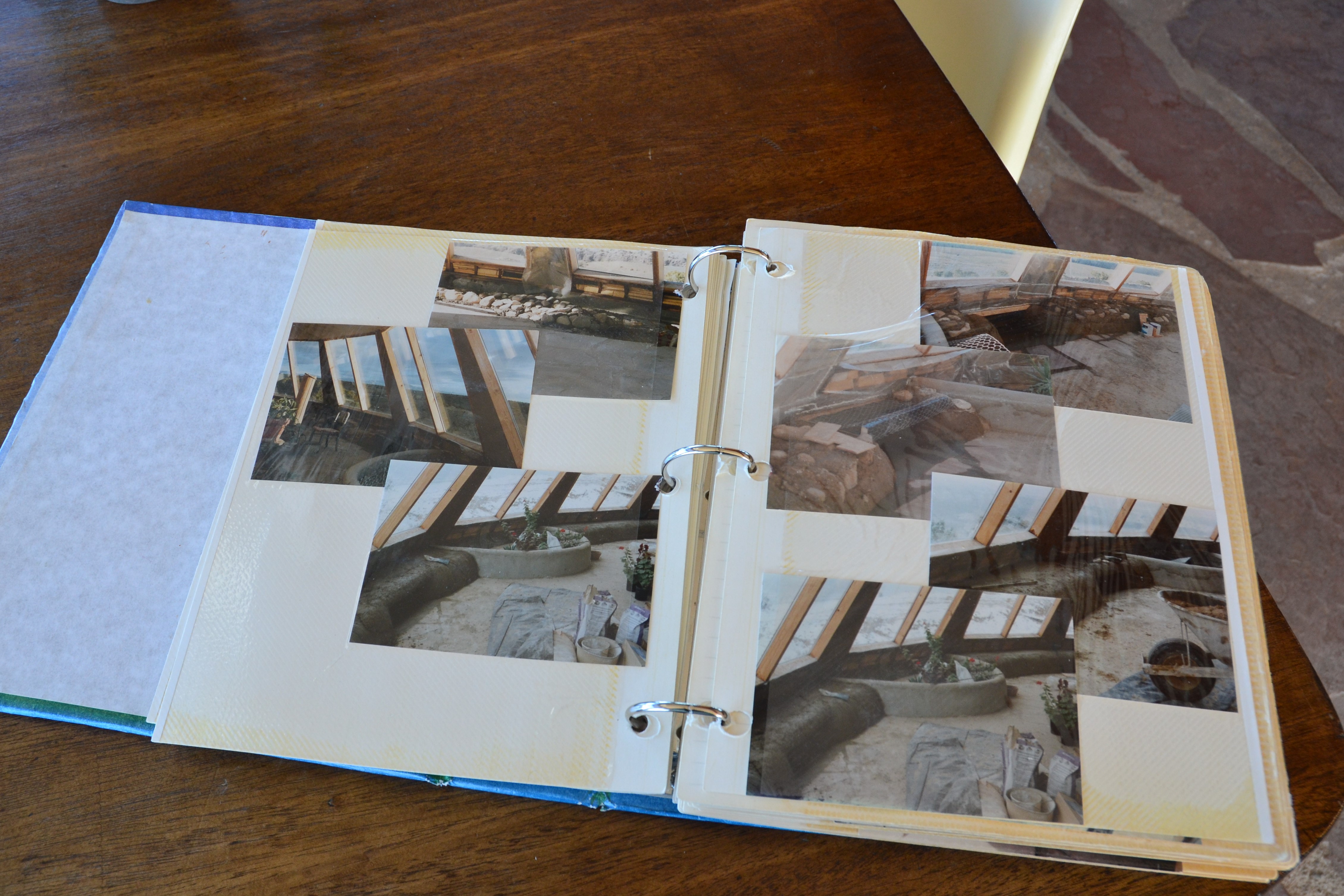
Brenda has owned the house for a few years, and she was very enthusiastic to answer my questions and show me an album of photos from when it was built. I love the idea of reusing materials that would otherwise go to the landfill, but Christian had a great question: wouldn’t it be better to send those cans and bottles to get recycled, rather than seal them up in a wall? While he and I are lucky to have a recycling facility close enough to our house that I drive our bottles and cans there myself, we do have friends out west who don’t have municipal recycling programs because it’s not cost effective or even a net benefit for the environment to collect them. While recycling is probably the best alternative to landfilling in Pittsburgh, reuse may be the best alternative to landfilling in Taos.
And understanding the idiosyncrasies of a given location is an important consideration when doing anything related to sustainability, including building an earthship. Earthships have now been built all over the world and seem to be incredibly beneficial in disaster-prone areas that have limited infrastructure for power supply and waste management. Meanwhile in the US, where earthship enthusiasts are frequently at odds with building codes, long construction timelines, and pricey expertise, [10] this style of living remains niche, at least for now. I will be curious to see how the movement grows in the years to come, even as nothing more than an educational tool to help us rethink our approach to building conventional homes.
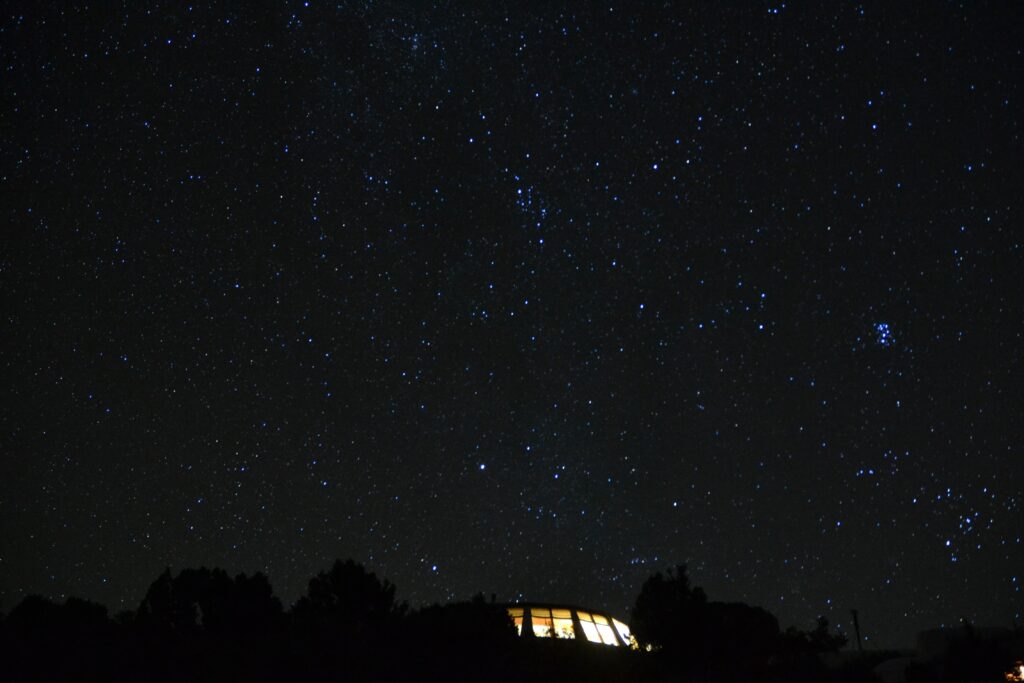
In any case, I was thrilled to get the opportunity to spend the night in a home that was part sustainability proof-of-concept and part art piece. And in doing research for this post, I was excited to learn that someone is building an earthship an hour from my hometown here in Pennsylvania. [11] I may just have to visit…
Thanks for reading!
Keep Reading About ’90s Nostalgia –>
[1] https://en.wikipedia.org/wiki/Rainbow_Warrior_(1957)
[2] https://environmentalhistory.org/20th-century/nineties/
[3] https://en.wikipedia.org/wiki/The_Big_Help
[4] https://www.pinterest.com/pin/dobson-house-entry–796011302866889464/
[5] https://www.imdb.com/title/tt1104694/
[6] https://www.youtube.com/watch?v=wgUkjbMhF18
[7] https://radicalmoderate.online/batter-my-heart-three-persond-god/
[8] https://www.vrbo.com/1762199
[10] https://theministryofarchitecture.com/earthships/earthship-pros-cons/
[11] https://www.youtube.com/watch?v=CkHTvr0b_Wg
0 Comments